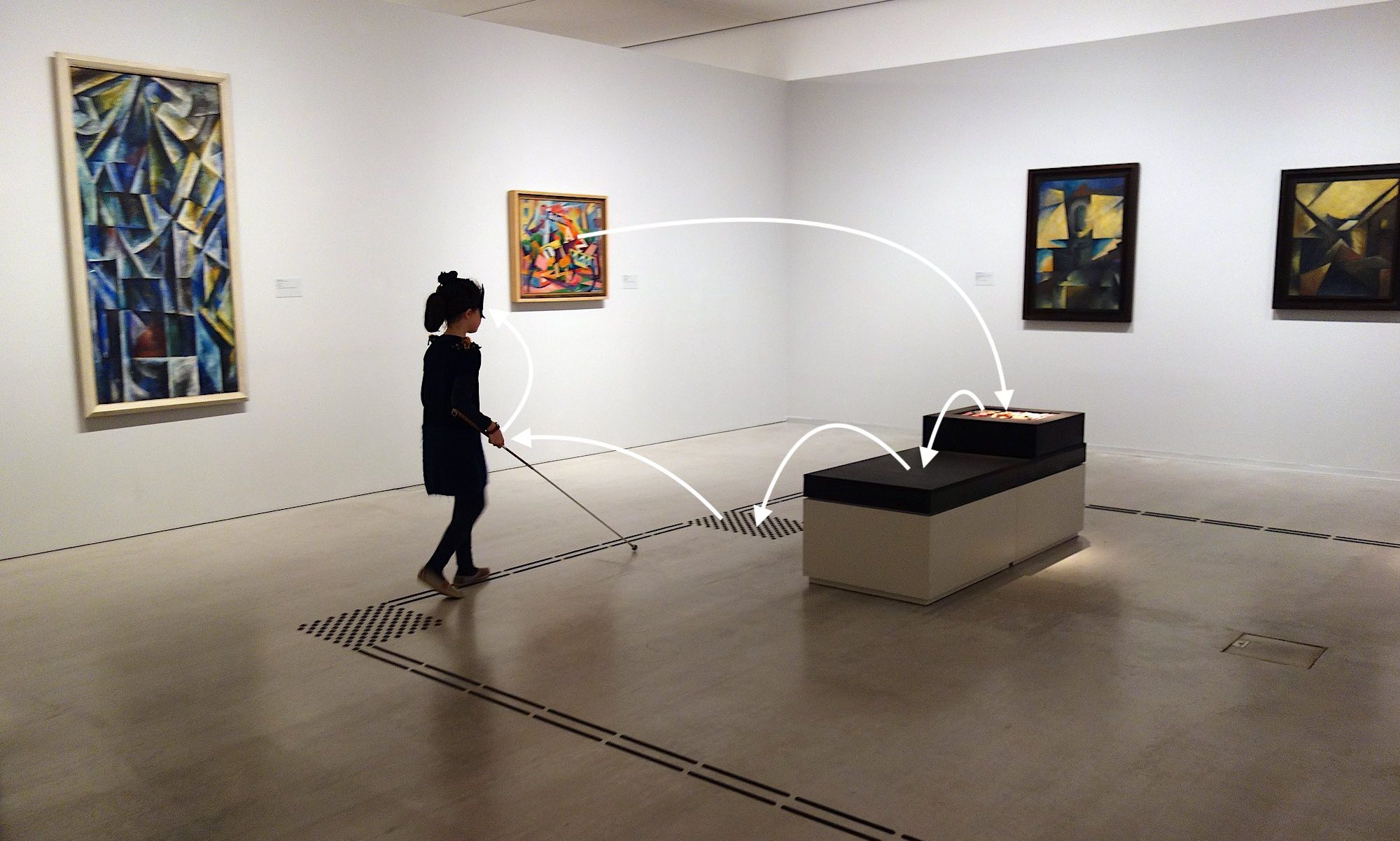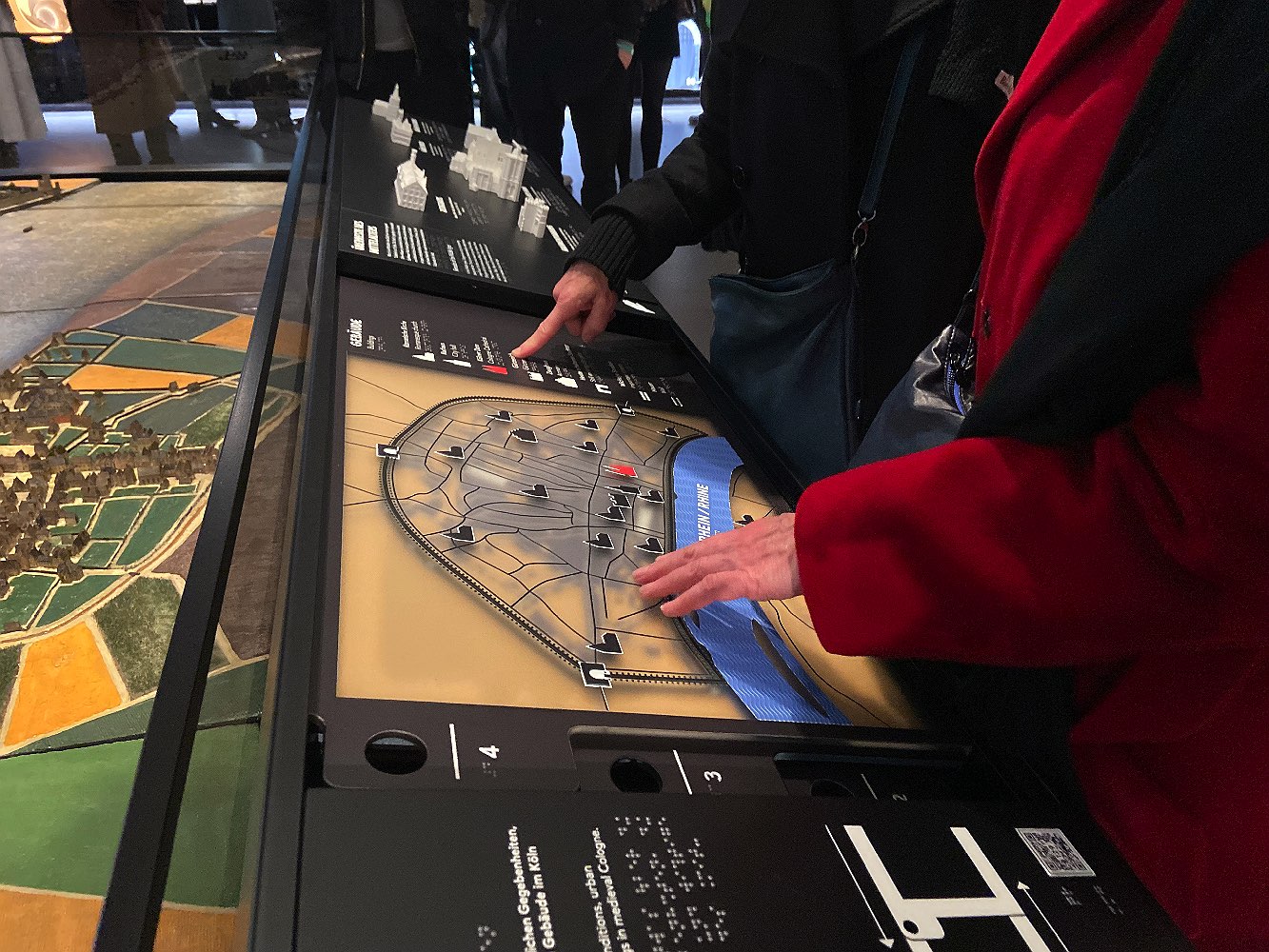Mind game: You are Linda P.
When Linda P. goes to the Cologne City Museum with her husband and children, they walk through the building as a group, talking and pointing out, discussing and adding to their knowledge of each area and aspect of the exhibition. They ask each other questions and share what they have learned.
Does it matter whether Linda is blind or not? It doesn’t matter in the Cologne City Museum because each themed area is equipped with a comparable depth of information and range of objects in different ways. But it does play a role in the other museums when Linda is guided to only a few, mostly monothematic „inclusion exhibits“, which, as Linda then realizes, actually ensure her exclusion. In fact, she didn’t notice anything about the actual exhibition or her family.
This photo shows a value-added exhibit for everybody. The historical city model (left in the picture), which is only visually accessible, is made much more interesting and informative by the didactic presentation on different levels that can be moved over one another (topography, urban development, important buildings, urban structure). These are, of course, tactilely legible alongside the models of the important buildings. This didactic presentation is the key to achieving the educational goal for all visitors.
And so, to conclude, the crucial question: what does inclusion in museums cost?
It costs the investment in a good didactic concept (which of course thinks inclusively) and often not only brings added value, but also the utility value for some exhibits that would otherwise remain inaccessible to the majority of visitors. Incidentally, Linda P. and her family would not have come without the inclusive design of the exhibition because they naturally wanted to experience the day together.
A multimedia guide provides further background information and the text version in sign language for those interested. The museum’s inclusion concept, the tactile implementations and the floor guidance system were created by Steffen Zimmermann, the exhibition design by @neostudio.berlin

